NOM 199 CANCELLED?
On Thursday, February 25, we were surprised by the news of the publication in the Official Journal of the Mexican Federation of a document announcing the cancellation of NOM 199 (Mexican Official Standard NOM-199-SCFI-2017, Alcoholic beverages-Denomination, physicochemical specifications, commercial information and test methods), which caused a lot of confusion and commotion. But what is NOM 199? Why does it affect distilled beverage producers? Why does it concern the mezcal industry?
According to the Official Journal of the Federation: The purpose of this Mexican Official Standard is to establish the denomination, physicochemical specifications and commercial information that all alcoholic beverages must comply with, in order to provide truthful information to the consumer, as well as the test and conformity assessment methods applicable to them.
https://www.dof.gob.mx/nota_detalle.php?codigo=5502882&fecha=30/10/2017#:~:text=This%20Mexican%20Official%20Standard%20has%20the%20objective%20of%20establishing%20denomination%20,%20conformity%20applicable%20to%20the%20alcoholic%20beverages%20and%20to%20the%20alcoholic beverages%20to%20the%20alcoholic%20beverages%20.
This Standard is mandatory and applies to the entire national territory. It establishes the sanitary specifications and provisions for the sanitary and commercial labeling of alcoholic beverages marketed in the national territory. Likewise, it applies to individuals or legal entities engaged in the processing or importation of alcoholic beverages.
In other words, this rule was created to regulate beverages outside the existing appellations of origin (Mezcal, Tequila, Charanda, Bacanora, Sotol and Racilla, even though the latter does not have a standard, but that is another topic that we will address in another article), since there are beverages produced inside and outside these regions with appellation of origin that do not have standards that regulate them or guarantee their quality control. Some examples of beverages that it intends to regulate areGin, whiskey, cane spirits, creams of agave or cane distillates and other liquors that want to give certainty to the consumer and under this standard are obliged to meet certain requirements, among them the always “always” mandatory NOM 142 (NORMA OficialMexicana NOM-142-SSA1/SCFI-2014, Bebidas alcohólicas. Sanitary specifications. Sanitary and commercial labeling.), which is alsoinserted in NOM 070 (Standard regulating the Appellation of origin ofmezcal); therefore, NOM 142 is not new and can be consulted at https://www.dof.gob.mx/nota_detalle.php?codigo=5386313&fecha=23/03/2015. This standard regulates all alcoholic beverages, with or without Denomination of Origin.
This NOM 142 basically regulates some physicochemical parameters that distilled and fermented beverages must comply with, as well as regulations about pre-cautionary legends such as the famous legend: “ABUSE OF THIS PRODUCT IS HARMFUL TO HEALTH”, as well as the 3 prohibition symbols (attached in the image): the circle where a pregnant woman appears drinking, the symbol indicating that you should not drive if you drink and the symbol indicating that it is forbidden to people under 18 years of age. I insist, this rule has always been in force for alcoholic beverages and the communique issued, mentions a modification project, but nothing concrete for the moment, therefore, it continues to apply as it is.With this draft cancellation of the standard (and I emphasize “draft” because it is not an immediate fact), the only thing that happens is that the beverages that were trying to be regulated under this standard to give greater certainty to the consumer will no longer be able to do so, which leaves us again in a regulatory limbo; that is, now only by complying with the payment of taxes before the SAT in Mexico (being registered in the Alcoholic Beverages Register and having labels) can be sold domestically, only with names different from those marked in the DO. In the same way, in order to export, you only have to pay the taxes to enter the country, not use any name or indicative that makes reference to a previously established appellation of origin and comply with the administrative documentation; in this way, even without having physicochemical analyses that guarantee the innocuousness of the product, without knowing the origin of the raw material, and without knowing the number of liters per batch of the distillates, you can sell and export.
According to some reliable sources that enforced this regulation, it will not be cancelled overnight; there is still a process of debate and there must be a process to stop the cancellation project. Although it is true that it is already in the official gazette, the promoters of this standard assure that it is not definitive; therefore they will be able to continue certifying and granting holograms that indicate that the products comply with this standard as well as with NOM 142 mentioned above.
Another important point is that the NOM 199 normative parameters are the same as those of NOM 070; the only extra parameter evaluated by Standard 199 are esters; parameters that for you and for the producers have been a headache since the products sometimes comply with all the parameters except “this-res”; that is to say, they could comply with NOM 070. In order to comply with the parameters, certain modifications must be made that alter the sensory profile of the product; however, this also happens in the 070 standard, the higher the grade of the product (traditional and peasant Mezcal 45 to 55 % Alc. Vol.), the more difficult it is to pass the physicochemical parameters; therefore, it is necessary to make mixtures between batches, homogenize with glues, lower the grade with distilled water and other practices that are commonly used to comply with the standards (NOM 070 and in this case NOM 199) since, I repeat, the parameters are the same.

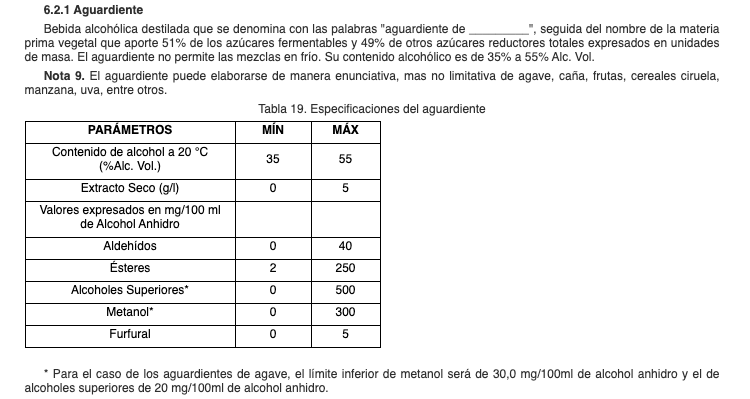
PARAMETERS TO BE COMPLIED WITH IN NOM 199

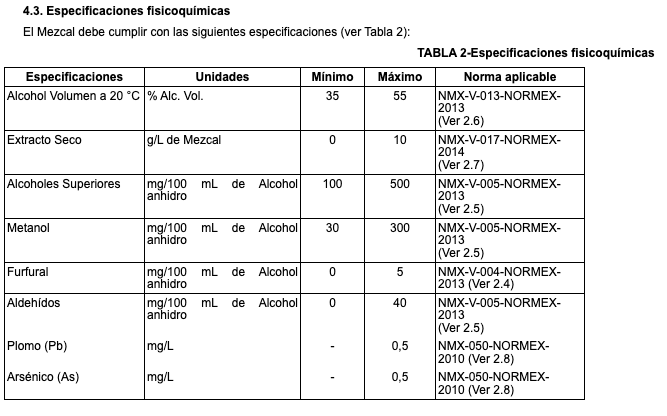
PARAMETERS TO BE COMPLIED WITH IN NOM 070
The conclusion of all this for you is that if you are not in an area with Denomination of Origin, as long as you are registered in the IMPI (with a trademark registration in class 33) and in the SAT (with Alcoholic Beverages Register, Marbetes and Exporters Register) you can market any beverage; a practice that is common among traders who export without any restriction and who do not inform the consumer of the origin of the products since there are no rules to regulate this activity. However, my recommendation is that producers and marketers, as the case may be, keep track of the batches produced and marketed and go to a laboratory to analyze them so that they have a guarantee that the production is safe for the consumer.

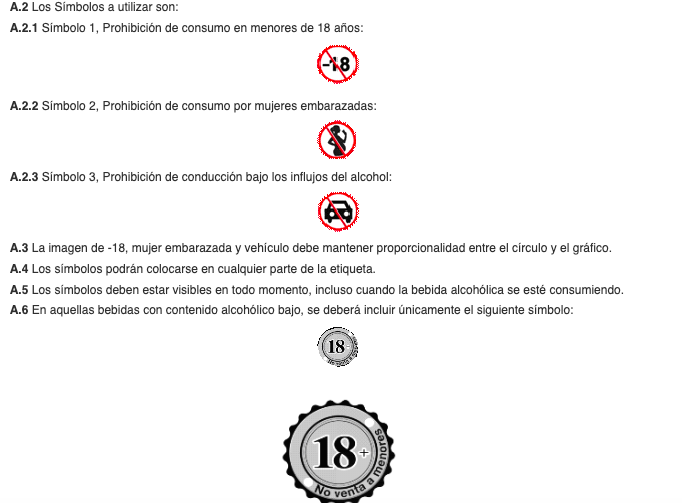
PROHIBITIONS NOM 142
As I already mentioned, NOM 199 is only valid in Mexico, it does issue compliance holograms but in Mexico, for other countries it is not valid (and this is a point for the rules governing Appellations of Origin, since they do have international validity due to the Lisbon Treaty). Having said that, in the case of exports, it is only necessary to have a certificate of origin, invoice documentation, export declaration and other administrative documents, as well as to pay the taxes for entry into the country and not to make any allusion between labels about any existing appellation of origin.
I can say that in my opinion, this cancellation project, in case it is applied, leaves the consumer unprotected (at the expense of consuming products without traceability) and the producers without weapons to defend the quality of their product, so I recommend that they have internal controls.
And to close, I will quote the words of Sosima Olivera of the 3 Colibrí Cooperative: “Therein lies the problem, now, what alternatives are there for traditional and peasant mezcals , consumer the decision isyours

You must belogged in to post a comment.